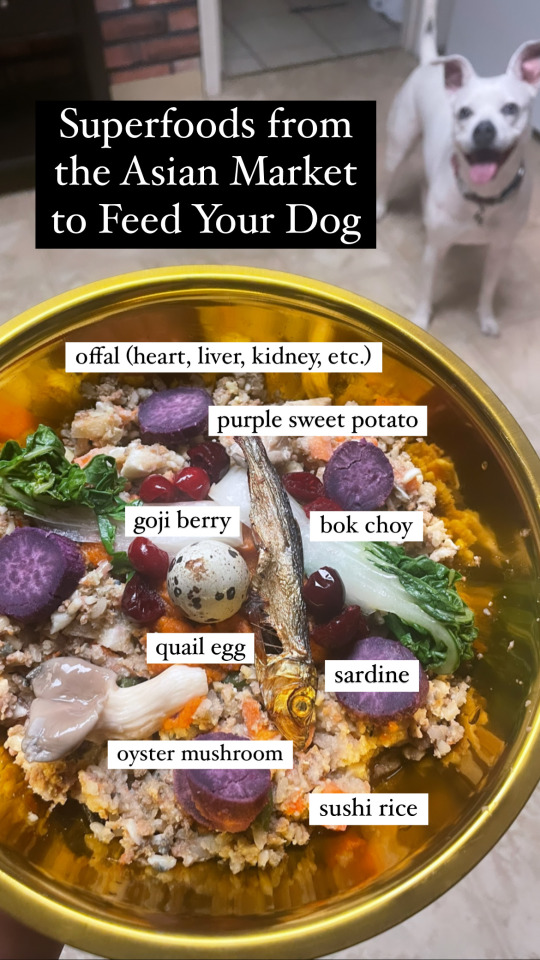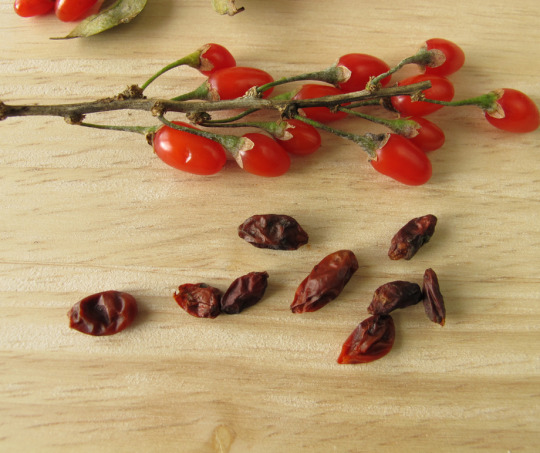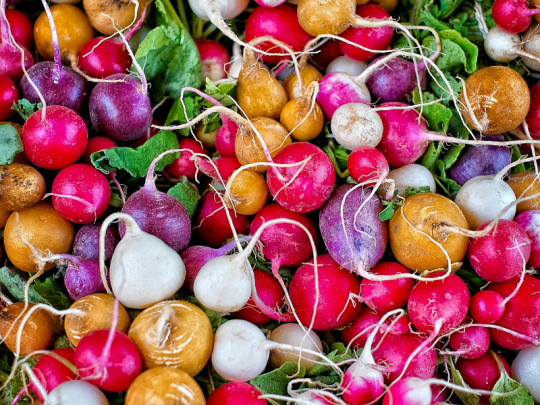#Carotenoids Market
Explore tagged Tumblr posts
Text
The carotenoids market is projected to reach USD 3.4 billion by 2029 from USD 2.5 billion by 2024, at a CAGR of 6.3% during the forecast period in terms of value.
#Carotenoids Market#Carotenoids#Carotenoids Market Size#Carotenoids Market Share#Carotenoids Market Growth#Carotenoids Market Trends#Carotenoids Market Forecast#Carotenoids Market Analysis#Carotenoids Market Report#Carotenoids Market Scope#Carotenoids Market Overview#Carotenoids Market Outlook#Carotenoids Market Drivers#Carotenoids Industry#Carotenoids Companies
0 notes
Text
The carotenoids market size is projected to reach USD 3.4 billion by 2029 from USD 2.5 billion by 2024, at a CAGR of 6.3% during the forecast period in terms of value.
#Carotenoids Market#Carotenoids#Carotenoids Market Size#Carotenoids Market Share#Carotenoids Market Growth#Carotenoids Market Trends#Carotenoids Market Forecast#Carotenoids Market Analysis#Carotenoids Market Report#Carotenoids Market Scope#Carotenoids Market Overview#Carotenoids Market Outlook#Carotenoids Market Drivers#Carotenoids Industry#Carotenoids Companies
0 notes
Text
Carotenoids Market Rises with Nutraceutical Preference and Tech Evolution

Surging demand in nutraceuticals and advancements in extraction technologies is expected to drive the Global Carotenoids Market growth in the forecast period, 2025-2029
According to TechSci Research report, “Carotenoids Market – Global Industry Size, Share, Trends, Competition Forecast & Opportunities, 2029”, the Global Carotenoids Market stood at USD 1.78 Billion in 2023 and is anticipated to grow with a CAGR of 4.57% in the forecast period, 2025-2029. The Global Carotenoids Market is propelled by several key drivers. Primarily, the increasing consumer awareness about the health benefits of carotenoids, such as their antioxidant properties and their role in reducing the risk of chronic diseases, is driving market growth.
Additionally, the rising demand for natural colorants in the food and beverage industry is contributing to the market's expansion. Furthermore, the growth of the animal feed industry, where carotenoids are commonly used, is also a significant factor. Ongoing research and development, leading to the discovery of new health benefits and applications of carotenoids, acts as a catalyst for the market's growth.
The global carotenoids market is currently experiencing a remarkable growth trajectory. This surge can be attributed to multiple factors that are driving its expansion. Firstly, there is a growing consumer awareness about the various health benefits associated with carotenoid consumption. These benefits include not only improved vision, enhanced immune function, and a reduced risk of chronic diseases but also their potential role in supporting cardiovascular health and promoting healthy aging.
Browse over XX market data Figures spread through XX Pages and an in-depth TOC on "Global Carotenoids Market” https://www.techsciresearch.com/report/carotenoids-market/4705.html
As a result of this increasing awareness, there is a surging demand for carotenoids in the food and beverage industry, where natural colorants are highly sought after. Carotenoids are not only used to enhance the visual appeal of food products but also to provide added nutritional value. Their vibrant hues, ranging from yellow to red, not only make food visually appealing but also signify the presence of important antioxidants. Moreover, carotenoids play a crucial role in the cosmetics and pharmaceuticals sectors. Their antioxidant properties and ability to promote skin health have made them a popular ingredient in skincare products and supplements. In addition to their potential benefits for skin health, carotenoids are also being explored for their potential role in protecting against UV-induced skin damage and promoting a youthful complexion.
Looking ahead, the market's outlook remains highly positive. Ongoing innovation and research efforts are expected to unlock new applications for carotenoids in various industries in the coming years. For instance, there is growing interest in using carotenoids as functional ingredients in nutraceuticals and dietary supplements, as well as in the development of novel drug delivery systems. With their wide range of benefits and versatile properties, carotenoids are poised to play an even more significant role in promoting health and well-being across different sectors, contributing to the overall growth and expansion of the global carotenoids market. Furthermore, the increasing focus on sustainable and plant-based products has also contributed to the growth of the carotenoids market. Consumers are now more conscious of the environmental impact of their choices and are seeking natural alternatives. Carotenoids, derived from fruits, vegetables, and algae, provide a sustainable and eco-friendly option for various industries.
Additionally, technological advancements in extraction and purification techniques have improved the availability and quality of carotenoids, further fueling their market growth. These advancements have made it possible to extract carotenoids from a wider range of sources, including by-products from the food industry, reducing waste and maximizing resource utilization. The global carotenoids market is witnessing significant growth due to factors such as increasing consumer awareness, demand for natural colorants, and their versatile applications in various industries. With ongoing research and innovation, as well as the focus on sustainability, the market is expected to continue expanding in the coming years, offering new opportunities and benefits across different sectors.
The Global Carotenoids Market is segmented into source, type, application, formulation, regional distribution, and company
Based on formulation, Powder form currently dominates the market due to its broad range of applications in the food, feed, and pharmaceutical sectors. Its versatility makes it a preferred choice for various industries, allowing for convenient handling and storage. Additionally, the fine particle size and homogeneous nature of powdered substances contribute to improved solubility and dispersion, enhancing their effectiveness in different formulations and processes.
With its ability to dissolve easily, powdered substances offer enhanced solubility, ensuring that they can be effectively incorporated into various formulations. Moreover, their homogeneous nature enables consistent dispersion, guaranteeing uniformity throughout the product. This not only enhances the overall effectiveness of the substances but also facilitates their integration into different manufacturing processes. The convenience of handling and storage further adds to the appeal of powder form.
The fine particle size allows for easy measuring and accurate dosing, making it a reliable choice for precise applications. Additionally, the stability and longer shelf life of powdered substances ensure that they can be stored for extended periods without compromising their quality. Considering these factors, it's no wonder that powder form continues to dominate the market, catering to the diverse needs of industries and providing improved solubility, dispersion, and convenience.
Based on region, The North American region holds a dominant position in the global carotenoids market, mainly attributed to the increasing consumer awareness about the multitude of health benefits associated with carotenoids. These powerful antioxidants are known to promote eye health, boost immune function, and reduce the risk of chronic diseases. Moreover, the growing preference for natural and organic products among consumers has fueled the demand for carotenoids in various industries including food, pharmaceuticals, and cosmetics.
In addition to consumer awareness and demand, the strong presence of key market players in North America further contributes to its leading position. Established companies with extensive research and development capabilities are continuously innovating in the field of carotenoid extraction methods, resulting in improved product quality and efficiency. Technological advancements, such as advanced extraction techniques and sustainable sourcing methods, have propelled the market growth in this region. With a combination of consumer awareness, demand for natural products, and ongoing advancements in technology and research, North America continues to be a frontrunner in the global carotenoids market.
Major companies operating in Global Carotenoids Market are:
Koninklijke DSM N.V.
BASF SE
Chr. Hansen Inc.
Cyanotech Corporation
Allied Biotech Corporation
Lycored Limited
Kemin Industries Inc.
Fuji Chemical Industry Co Ltd.
Novus International Inc. (Carotenoid Technologies, S.A.)
Döhler Group
Download Free Sample Report https://www.techsciresearch.com/sample-report.aspx?cid=4705
Customers can also request for 10% free customization on this report
“The future of the global carotenoids market looks incredibly promising as it is poised for substantial growth. This is primarily driven by the increasing awareness of health among consumers and the growing demand for natural and organic beauty products. As people become more knowledgeable about the numerous health benefits of carotenoids, especially their exceptional antioxidant properties and pro-vitamin A characteristics, their application in the dietary supplement, food, and cosmetics industries is expected to witness significant expansion.
Moreover, environmental factors also play a crucial role in shaping the future of the carotenoids market. With mounting concerns about synthetic additives and a growing preference for clean and sustainable ingredients, the demand for carotenoids is anticipated to further fortify the market's continued evolution and expansion. This shift towards natural alternatives is likely to drive the transformation of the global carotenoids market, making it a thriving and dynamic industry.,” said Mr. Karan Chechi, Research Director with TechSci Research, a research-based management consulting firm.
“Carotenoids Market - Global Industry Size, Share, Trends, Opportunity, and Forecast, 2019-2029 Segmented By Source (Synthetic Carotenoids and Natural Carotenoids), By Type (Astaxanthin, Beta-Carotene, Lutein, Lycopene, Canthaxanthin, and Zeaxanthin, Others), By Application (Feed, Food & Beverages, Dietary Supplements, Cosmetics, and Pharmaceuticals), By Formulation (Beadlet, Powder, Oil Suspension and Emulsion), By Region and Competition”, has evaluated the future growth potential of Global Carotenoids Market and provides statistics & information on market size, structure and future market growth. The report intends to provide cutting-edge market intelligence and help decision makers take sound investment decisions. Besides, the report also identifies and analyzes the emerging trends along with essential drivers, challenges, and opportunities in Global Carotenoids Market.
Browse Related Research
Fertilizer Catalyst Market https://www.techsciresearch.com/report/fertilizer-catalyst-market/18882.html Seed Treatment Market https://www.techsciresearch.com/report/global-seed-treatment-market/1392.html Microencapsulated Pesticides Market https://www.techsciresearch.com/report/global-microencapsulated-pesticides-market/1622.html
Contact
TechSci Research LLC
420 Lexington Avenue, Suite 300,
New York, United States- 10170
Tel: +13322586602
Email: [email protected]
Website: www.techsciresearch.com
#Carotenoids Market#Carotenoids Market Size#Carotenoids Market Share#Carotenoids Market Trends#Carotenoids Market Growth
0 notes
Text
Carotenoids Market Report 2023, Industry Size, Demand, Growth Drivers and Forecast till 2028
IMARC Group has recently released a new research study titled “Carotenoids Market: Global Industry Trends, Share, Size, Growth, Opportunity and Forecast 2023-2028”, offers a detailed analysis of the market drivers, segmentation, growth opportunities, trends and competitive landscape to understand the current and future market scenarios. How big is the carotenoids market? The global carotenoids…

View On WordPress
0 notes
Text
Cross-Industry Collaborations in the Carotenoids Market

Introduction:
In an era of interconnectedness and shared expertise, cross-industry collaborations are emerging as catalysts for innovation, driving advancements in diverse fields including nutrition, healthcare, agriculture, and cosmetics. Within the carotenoids market, collaboration between stakeholders from different industries is fostering synergies, accelerating research, and expanding market opportunities.
This article explores the significance of cross-industry collaborations in the carotenoids market, recent examples of successful partnerships, and their impact on product development, sustainability, and market growth.
According to Next Move Strategy Consulting, the global Carotenoids Market is predicted to reach USD 2.43 billion by 2030 with a CAGR of 4% from 2024-2030.
Download FREE Sample: https://www.nextmsc.com/carotenoids-market/request-sample
The Power of Collaboration:
Cross-industry collaborations bring together complementary expertise, resources, and perspectives to tackle complex challenges and seize new opportunities. By pooling knowledge from diverse fields such as biotechnology, food science, pharmaceuticals, and cosmetics, collaborators can leverage synergies, accelerate innovation cycles, and drive meaningful outcomes. In the carotenoids market, collaborations between researchers, manufacturers, suppliers, and end-users are facilitating the development of novel products, technologies, and applications with enhanced efficacy, safety, and sustainability.
Key Areas of Collaboration:
Cross-industry collaborations in the carotenoids market span a wide range of areas, including research and development, ingredient sourcing, formulation technology, and market access. For example, collaborations between food companies and agricultural suppliers are driving advancements in sustainable farming practices, biofortification, and crop breeding to enhance the nutritional content of staple crops with carotenoids.
Similarly, partnerships between pharmaceutical companies and research institutions are advancing the development of carotenoid-based therapies for various health conditions, including age-related macular degeneration (AMD), cancer, and cardiovascular diseases.
Geographical Analysis:
Europe emerges as the dominant force in the carotenoids market throughout the forecast period, driven by multiple commercial expansions and the active involvement of top market players operating and investing in the region. The continuous commitment and strategic initiatives of these key industry players significantly contribute to the robust growth and overall prominence of the carotenoids market in Europe thereby driving the market growth. The carotenoids market in the Asia-Pacific region is experiencing substantial growth, primarily driven by the presence of a large population in the region.
The significant demographic size in Asia-Pacific offers an expansive consumer base for the carotenoids market. The region's growing awareness of the health benefits and application of carotenoid products across various applications, including food, healthcare, and cosmetics, further fuels the market's expansion. The burgeoning food and beverage industry in the Asia-Pacific region complements the growth of the carotenoid market.
As this industry expands, there is an increased demand for natural additives and ingredients, including carotenoids, to meet consumer preferences for clean-label and healthier products. This presents a significant opportunity for carotenoid manufacturers to tap into the growing market in the Asia-Pacific region and cater to the evolving needs of food and beverage companies in this thriving market.
Recent Examples of Collaborations:
In recent years, there have been several notable examples of successful cross-industry collaborations in the carotenoids market. For instance, a partnership between a biotechnology company and a food manufacturer resulted in the development of a novel microalgae strain engineered to produce high levels of astaxanthin, a potent carotenoid with antioxidant properties. This collaboration enabled the commercialization of sustainable, plant-based astaxanthin supplements with superior purity and potency, meeting the growing demand for natural health products.
Similarly, a collaboration between a cosmetics company and a research institution led to the development of a patented delivery system for carotenoids in skincare formulations. By combining expertise in nanotechnology, dermatology, and cosmetic science, the partners created liposomal encapsulation technology that enhances the stability, bioavailability, and skin penetration of carotenoids, offering consumers effective protection against UV-induced oxidative stress and premature aging.
Future Outlook and Opportunities:
As the carotenoids market continues to expand and diversify, cross-industry collaborations are expected to play an increasingly vital role in driving innovation, sustainability, and market growth. With advancements in biotechnology, formulation technology, and consumer insights, collaborators can unlock new opportunities for developing novel products and applications that address evolving consumer preferences and market trends.
Moreover, collaborations between industry stakeholders and academic institutions can accelerate research and development efforts, foster knowledge exchange, and shape the future direction of the carotenoids market.
Inquire before buying: https://www.nextmsc.com/carotenoids-market/inquire-before-buying
Competitive Landscape:
The top market players operating in the carotenoids market are Koninklijke DSM, BASF SE, Chr. Hansen A/S, Kemin Industries, Lycored Ltd., Fuji Chemical Industry Co Ltd., Dohler Group Se, Allied Biotech Corporation, Farbest Brands, Excelvite Sdn. Bhd. and others. These market players are adopting various strategies such as product launches and collaborations to remain dominant in the market.
BASF and Cargill expanded their partnership to offer high-performance enzyme solutions to animal protein producers. This collaboration aims to provide innovative enzyme-based solutions, generating distinctive value for animal feed customers. The extended partnership includes the development, production, marketing, and sale of customer-centric enzyme products and solutions.
Recent News:
In a recent development, a company announced a strategic partnership with [Research Institution] to explore the therapeutic potential of carotenoids in combating inflammatory bowel diseases (IBD). Leveraging expertise in microbiology, immunology, and nutritional science, the partners will conduct preclinical studies to investigate the anti-inflammatory effects of carotenoids on gut health and immune function. This collaboration underscores the growing interest in leveraging carotenoids as natural remedies for chronic inflammatory conditions, paving the way for future dietary interventions and therapeutic applications.
Furthermore, a Ingredient Supplier and a Food Company announced a collaborative initiative to develop sustainable sourcing practices for carotenoid-rich ingredients. By working together to establish fair trade agreements, promote regenerative agriculture, and support smallholder farmers, the partners aim to ensure a stable and ethical supply chain for carotenoids while preserving biodiversity and environmental integrity. This collaboration reflects a shared commitment to sustainability and responsible sourcing in the carotenoids market, addressing growing consumer demand for transparent and ethical food production practices.
Conclusion:
Cross-industry collaborations are driving innovation, sustainability, and market growth in the carotenoids market, enabling stakeholders to harness the full potential of these valuable compounds for health, nutrition, and well-being. By fostering partnerships between researchers, manufacturers, suppliers, and end-users, collaborators can leverage collective expertise and resources to overcome challenges, seize opportunities, and create meaningful impact across diverse sectors.
As the pace of innovation accelerates and consumer expectations evolve, collaborative approaches will continue to shape the future of the carotenoids market, unlocking new possibilities for improving human health, environmental sustainability, and societal well-being.
#carotenoids#food and beverages#carots#market research'#global market#industry analysis#healthy eating
0 notes
Text
Carotenoids Market Size, Share, Types, Products, Trends, Growth, Applications and Forecast 2023 to 2030

The Carotenoids market was valued at USD 1.63 billion in 2021 and is expected to reach USD 2.19 billion by the year 2028, at a CAGR of 4.3%.
The carotenoids market encompasses a wide range of industries, from food and beverages to pharmaceuticals and cosmetics. Carotenoids are natural pigments responsible for the vibrant colors seen in many fruits and vegetables, and they also have antioxidant properties that offer various health benefits. The food and beverage industry is a significant consumer of carotenoids, using them as natural colorants to enhance the visual appeal of products. They are added to a variety of food items, including juices, dairy products, snacks, and confectionery, to impart shades of red, orange, and yellow. With consumers increasingly favoring natural ingredients over synthetic ones, the demand for carotenoids in this sector is expected to remain strong.
Get Full PDF Sample Copy of Report: (Including Full TOC, List of Tables & Figures, Chart) @
https://introspectivemarketresearch.com/request/15825
Leading players involved in the Carotenoids Market include:
Allied Biotech, BASF SE, Dohler GmbH, FMC Corporation, Sensient Technologies, Chr Hansen Holdings A/S, Kemin Industries, Algatech Tech, Novus International Inc., DDW The Color House, Lycored Ltd, Fuji Chemical Industry Co. Ltd., E.I.D. Parry, Divi's Laboratories, Farbest Brands, Deinove SAS and others Major Players.
Updated Version 2024 is available our Sample Report May Includes the:
Scope For 2024
Brief Introduction to the research report.
Table of Contents (Scope covered as a part of the study)
Top players in the market
Research framework (structure of the report)
Research methodology adopted by Worldwide Market Reports
Moreover, the report includes significant chapters such as Patent Analysis, Regulatory Framework, Technology Roadmap, BCG Matrix, Heat Map Analysis, Price Trend Analysis, and Investment Analysis which help to understand the market direction and movement in the current and upcoming years.
If You Have Any Query Carotenoids Market Report, Visit:
https://introspectivemarketresearch.com/inquiry/15825
Segmentation of Carotenoids Market:
By Type
Astaxanthin
Beta-Carotene
Canthaxanthin
Capsanthin
Others
By Source
Synthetic
Natural
By Application
Animal Feed
Food & Beverages
Personal Care & Cosmetics
Dietary Supplements
Pharmaceuticals
An in-depth study of the Carotenoids industry for the years 2023–2030 is provided in the latest research. North America, Europe, Asia-Pacific, South America, the Middle East, and Africa are only some of the regions included in the report's segmented and regional analyses. The research also includes key insights including market trends and potential opportunities based on these major insights. All these quantitative data, such as market size and revenue forecasts, and qualitative data, such as customers' values, needs, and buying inclinations, are integral parts of any thorough market analysis.
Market Segment by Regions: -
North America (US, Canada, Mexico)
Eastern Europe (Bulgaria, The Czech Republic, Hungary, Poland, Romania, Rest of Eastern Europe)
Western Europe (Germany, UK, France, Netherlands, Italy, Russia, Spain, Rest of Western Europe)
Asia Pacific (China, India, Japan, South Korea, Malaysia, Thailand, Vietnam, The Philippines, Australia, New Zealand, Rest of APAC)
Middle East & Africa (Turkey, Bahrain, Kuwait, Saudi Arabia, Qatar, UAE, Israel, South Africa)
South America (Brazil, Argentina, Rest of SA)
Reasons for Acquiring this Report:
1. Strategic Decision-Making for Government Leaders and Politicians:
Gain insights into the global Carotenoids Market Growth 2023-2030 market revenues at global, regional, and national levels until 2030. Assess and strategize market share based on comprehensive analysis, enabling informed decision-making. Identify potential markets for exploration and expansion.
2. Informed Decision-Making for Professionals and Product Developers:
Access a detailed breakdown of the Carotenoids Market Growth 2023-2030 market worldwide, including product variations, use cases, technologies, and final consumers. Allocate resources effectively by anticipating demand patterns for emerging products. Stay ahead in product development by understanding market dynamics and consumer preferences.
3. Strategic Planning for Sales Managers and Market Stakeholders:
Utilize market breakdowns to target specific segments, optimizing sales strategies. Address challenges and capitalize on expansion opportunities highlighted in the report. Mitigate threats effectively with a comprehensive understanding of market risks.
4. Comprehensive Understanding for Executives:
Analyze primary drivers, challenges, restrictions, and opportunities in the global Laboratory Clothes market. Develop effective strategies by gaining insights into market dynamics. Allocate resources based on a thorough understanding of market conditions.
5. Competitive Intelligence:
Obtain a detailed analysis of competitors and their key tactics in the Carotenoids Market Growth 2023-2030. Plan market positioning based on a comprehensive understanding of the competitive landscape. Stay ahead by learning from competitors’ strengths and weaknesses.
6. Accurate Business Forecasting:
Evaluate the accuracy of global Carotenoids Market Growth 2023-2030 business forecasts across regions, major countries, and top enterprises. Make data-driven decisions with confidence, minimizing risks associated with inaccurate forecasts. Stay ahead of industry trends by aligning business strategies with reliable forecasts.
Acquire This Reports: -
https://introspectivemarketresearch.com/checkout/?user=1&_sid=15825
About us:
Introspective Market Research (introspectivemarketresearch.com) is a visionary research consulting firm dedicated to assisting our clients to grow and have a successful impact on the market. Our team at IMR is ready to assist our clients to flourish their business by offering strategies to gain success and monopoly in their respective fields. We are a global market research company, that specializes in using big data and advanced analytics to show the bigger picture of the market trends. We help our clients to think differently and build better tomorrow for all of us. We are a technology-driven research company, we analyse extremely large sets of data to discover deeper insights and provide conclusive consulting. We not only provide intelligence solutions, but we help our clients in how they can achieve their goals.
Contact us:
Introspective Market Research
3001 S King Drive,
Chicago, Illinois
60616 USA
Ph no: +1-773-382-1047
Email: [email protected]
#Carotenoids#Carotenoids Market#Carotenoids Market Size#Carotenoids Market Share#Carotenoids Market Growth#Carotenoids Market Trend#Carotenoids Market segment#Carotenoids Market Opportunity#Carotenoids Market Analysis 2022#US Carotenoids Market#Carotenoids Market Forecast#Carotenoids Industry#Carotenoids Industry Size#china Carotenoids Market#UK Carotenoids Market
0 notes
Text
Functional Food and Nutraceuticals Market - Forecast(2023 - 2028)
#functional foods market#function foods report#functional foods market report#omega-3 market size#functional food companies#functional food market share#nutraceuticals#functional food market#nutraceuticals market#nutraceuticals companies#nutraceuticals market size#nutraceuticals report#Anti-Oxidants#Carotenoids#Fatty Acids#Minerals#Vitamins#">
0 notes
Text

These past few years, I have become a huge advocate for feeding fresh food to dogs to enhance their lives. However, you don't exactly have to transition your dog to a 100% fresh food diet in order to gain the benefits of fresh food.
Simply adding fresh food to your dog's kibble can go a long way in improving their nutrition and overall health. For instance, one study done a group of dogs in 2005 revealed that feeding vegetables just three times a week had significantly lowered their risk of developing cancer, compared to dogs who were only fed kibble.
Asian markets, in particular, have some very beneficial fresh food items that aren't typically found at your local grocery store. These food items, however, are not intended to fully replace your dog's food. Remember - too much of something good can be bad for you.
Instead, they should be offered in moderation as treats, or just small amounts topped over an already complete and balance meal. As a general rule of thumb, treats/toppers should never make more than 10% of your dog's overall diet.

Bok choy (Chinese cabbage) is full of essential vitamins and minerals needed to support a dog’s eyesight, cardiac function, digestion, bone strength, and immunity. Sulfurophane - a compound found in bok choy and other cruciferous vegetables - has been linked to inhibiting cancer cell growth, lowering blood pressure, and activating the nuclear factor Nrf2 which prevents the development of diabetes and its complications. Bok choy’s low calorie, high fiber content also make it a good option for a snack/food topper for dogs who need to control their weight.
Preparation: Lightly steam or boil for better nutrient absorption. Cooking will also help neutralize the enzyme (myrosinase) that can decrease thyroid function. You should also chop/trim their long leaves to avoid choking hazards.

Goji berries (wolfberries) are rich in amino acids, carotenoids which support healthy vision, and polyphenols that have anti-inflammatory, anti-tumor, and cardio-protective properties. Studies on goji berry supplementation in animals have shown that it has the potential to help lower cholesterol, protect the liver by increasing hepatic antioxidant activity, as well as enhance metabolic homeostasis and prevent diabetes-induced renal inflammation.
Preparation: Remove stems if still attached and cut/mash berries. If dried, soak in water until softened to avoid passing straight through the GI tract and losing the benefits of its nutrients.

Offal refers to the internal organs and variety meats of animals that can be consumed as food (i.e. lung, heart, kidney, liver, gizzard, head, feet, etc.) The word 'offal' literally translates to "fall off", and thus, whatever falls off the skeleton during the butchering process. Offal is densely loaded with essential vitamins, minerals, proteins, and fats - so small amounts go a long way. Pet owners who use these as ingredients as part of a complete and balanced recipe should keep in mind that each organ is unique in its nutrient profile - dependent on the animal it is sourced from and how it is raised. For example, grass-fed beef may contain less fat yet more vitamin A and E than grain-fed beef, and beef liver has significantly more vitamin A and copper than chicken liver.
Preparation: Boil in water or low-sodium broth. May also be baked or dehydrated into jerky treats.

Oyster mushrooms are a good source of protein and fiber, and vitamins that support healthy digestion. They can help to increase satiety and maintain healthy body weight. Oyster mushrooms are also full of pantothenic acid which help to maintain cognitive function and healthy skin/coat. Beta-glucans derived from oyster mushrooms have also been shown to reduce inflammation and strengthen immunity.
Preparation: Lightly sauté or boil in water or low-sodium broth. Raw or dried mushrooms can be difficult for dogs to digest.

Purple sweet potato (Ube or Okinawan sweet potato) are typically found in grocery stores more commonly during the fall/winter seasons. They contain more antioxidants than regular sweet potatoes due to the anthocyanins that cause their violet hue. While all potato varieties may impact blood sugar levels because of their high carbohydrate content, purple potatoes may exert less of an effect because of their high polyphenol content that decreases the absorption of starches in the intestines. In addition, they have been linked to improving blood pressure, likely due to their high potassium content.
Preparation: Peel skin and bake until soft for better digestibility and to prevent intestinal blockages. May be boiled and drained to reduce oxalate intake for dogs with a history of bladder stones, or prone to urinary issues.

Quail eggs are small, yet packed with protein and essential fatty acids, and have a higher ratio of iron, riboflavin, and vitamin b12 than chicken eggs. It is even safe and can be beneficial to feed them with the shells included for added calcium. Quail eggs have been linked to improving bone growth/healing, reducing liver damage, and increasing energy levels. While some studies have shown evidence of quail eggs treating allergies in humans and mice, they may be less likely to trigger reactions than chicken eggs in dogs who have poultry sensitivities.
Preparation: Wash thoroughly, and handle gently as they are more fragile due to their tiny size. Cooking methods are similar to that of chicken eggs, yet require less time.

Sardines contain all the amino acids your dog needs for optimal health, making it a "complete protein". They are also notorious for being rich in omegas and coenzyme q-10, which help support heart and brain health. What sets sardines apart from other fish, too, is that they are smaller and more short-lived species than larger predator fish and may have less of a risk for mercury poisoning. Because they are so small and have soft bones, you can feed them whole to your pets.
Preparation: Bake or dehydrate. If already purchased as dried, be sure to make sure there is no added salt or seasonings. If canned, preferably those stored in water only.

Sushi rice (Japanese sticky rice) has a high proportion of starch and moisture, giving it a stickier texture when cooked. Sushi rice has virtually zero fat, yet still provides a desirable balance of nutrients while remaining gentle on a dog’s digestive tract. Its higher iron content than regular rice supports healthy blood circulation and can provide more energy to dogs who are recovering from illness. Cooling/refrigerating the rice before serving also enables more retrogradation of prebiotic fiber, helping to lower glycemic responses and maximize intestinal function.
Preparation: Rinse thoroughly and soak in water (with 1tbsp apple cider vinegar - optional) before cooking. If you don’t have a rice cooker or instant pot, boil on the stove until the water is completely absorbed. May be cooked with bone broth for added flavor. You can also use small amounts of beet root powder, turmeric, or blue spirulina to add color and nutrients.
#asian markets#pet food#dog treats#bok choy#goji berries#offal#oyster mushrooms#quail eggs#sardines#sushi rice#purple sweet potato
9 notes
·
View notes
Text
According to MarketsandMarkets, the global carotenoids market is set to grow from USD 2.5 billion in 2024 to USD 3.4 billion by 2029, driven by a CAGR of 6.3%. This growth highlights an increasing awareness of carotenoids' health benefits and their versatile applications across food, feed, and nutraceutical sectors. Consumers’ demand for natural, clean-label ingredients has pushed carotenoids to the forefront, especially within the food industry where natural beta-carotene is increasingly used in products such as ice creams, bakery items, and soft drinks.
#Carotenoids Market#Carotenoids#Carotenoids Market Size#Carotenoids Market Share#Carotenoids Market Growth#Carotenoids Market Trends#Carotenoids Market Forecast#Carotenoids Market Analysis#Carotenoids Market Report#Carotenoids Market Scope#Carotenoids Market Overview#Carotenoids Market Outlook#Carotenoids Market Drivers#Carotenoids Industry#Carotenoids Companies
0 notes
Text
The carotenoids market size is projected to reach USD 3.4 billion by 2029 from USD 2.5 billion by 2024, at a CAGR of 6.3% during the forecast period in terms of value.
#Carotenoids Market#Carotenoids#Carotenoids Market Size#Carotenoids Market Share#Carotenoids Market Growth#Carotenoids Market Trends#Carotenoids Market Forecast#Carotenoids Market Analysis#Carotenoids Market Report#Carotenoids Market Scope#Carotenoids Market Overview#Carotenoids Market Outlook#Carotenoids Market Drivers#Carotenoids Industry#Carotenoids Companies
0 notes
Photo

June is a joyfully colorful month in this region for several reasons! For starters, by the time June’s warmer temperatures seep into downstate New York, the growing season is entering full swing with a bright palette of fresh produce arcing through the farmstands in our markets. Plus, June is of course Pride Month – symbolized by the six-striped rainbow flag that cheerfully adorns flag poles, government buildings, store fronts and many other public spaces throughout the course of this month. Rainbows have risen to become a symbol of good fortune, positivity, diversity and inclusiveness in our popular culture, so it’s no coincidence that the phrase “eat the rainbow” is used by dieticians and other medical professionals to encourage people to put more fresh produce on their plates. In fact, consuming a variety of colorful fruits and veggies is the best way to introduce the most nutrients into your diet, without adding excessive calories. The naturally occurring pigments in these foods indicate different compounds with different properties that have been shown to provide a wide range of unique health benefits. So, to aid in the quest to taste and embrace the many seasonal colors of this month, here are some rainbow-hued items to look out for in the farmers market this weekend: Purple daikon Purple daikon radishes are at their peak during winter and spring months and are easily spotted at farmstands thanks to their bright violet skins offset by emerald leaves. This exotically hued root vegetable is native to Asia where daikon has been cultivated for thousands of years. Purple daikon is a specialty hybrid belonging to the same Brassicaceae family as the red radish. Their globular roots are oblong and cylindrical in shape with a thin tapered “tail.” The striking purple pigment is due to a type of flavonoid called anthocyanin -- the same antioxidant that gives blueberries their color, which will be entering the markets soon. If you don’t see purple daikon at the farmers market, look for watermelon radish, a round, green-white radish that reveals a dazzling hot pink interior when sliced open. Daikon radish can be enjoyed raw thanks to its crispy, crunchy texture and spicy, peppery profile that will add a splash of color and extra dimension to summer salads, grain bowls, pasta dishes and crudité platters. It can also be cooked using a variety of methods, including tossing the roots in olive oil, salt and pepper and roasting them at 375 °F for 10-15 minutes or until easily pierced with a fork. Don’t toss your leaves though! If they are still fresh and unblemished, radish greens of all kinds are delicious pan sautéed with thinly sliced garlic and olive oil then spritzed with a little freshly squeezed lemon juice. Red beets Beets grow in a rainbow of colors from gold to magenta to stunning candy cane-striped Chioggia beets. They derive their jewel-like hues from betalain, a type of natural plant pigment that has antioxidant and anti-inflammatory properties. The most common kind of beets you’ll find in the farmers market are the reddish/purple variety, but you can generally locate them in every color. Beets burst back into season this month so grab a big bunch of the spherical beauties this weekend and “get down to the beet”: * Beet salad with Goat Cheese and Balsamic * Balsamic and Fresh Thyme Roasted Beets * Easy, Homemade Pickled Beets Green peas Peas are cool weather-loving plants which means that June is a prime month for these exploratory climbers before they become sapped by the arrival of hotter temps. Peas contain a variety of minerals including magnesium, potassium and calcium and are also rich in antioxidant nutrients like vitamin C, carotenoids and flavanols. Snow, snap, and garden peas are all members of the legume family, but there are subtle differences between the three. Though they may look similar, each has a different texture and level of sweetness:
Garden (aka sweet or English) peas: Pods are firm and rounded and are shelled then discarded (toss them in your compost!) to retrieve the sweet peas inside which can be eaten raw or cooked. These are the common green peas that are sold shelled and frozen.
Snow peas: Snow peas are often used in stir-fries. The whole pod is edible and they are flat with very small peas inside. The tough “strings” along the seams are usually peeled back and removed before eating. Snow peas are mildly flavored and can be served raw or cooked.
Snap peas: A cross between snow peas and garden peas, the whole pod is eaten and has a crunchy texture and sweet flavor. Snap peas may be eaten raw or cooked. Stringless varieties are now available.
Of course, there are many more ways to shop the rainbow at the farmers market this week: orange carrots, canary yellow oyster mushrooms, blue potatoes, carmine red strawberries and the list goes on! And, if you want to eat your way to some extra credit, pick up a bunch of beautiful rainbow chard! The stalks come in an array of bright hues and pretty pastels from white, yellow, red, purple, pink and striped topped with vibrant, leafy greens.
3 notes
·
View notes
Text
Lutein Market Trends: How Demand for Eye Health and Supplements is Driving Growth in 2025
Lutein, a carotenoid naturally found in fruits, vegetables, and some leafy greens, has been gaining significant attention in recent years. Known primarily for its powerful antioxidant properties, lutein is most commonly associated with promoting eye health, reducing the risk of macular degeneration, and supporting overall visual function. As consumer awareness of the importance of eye health grows, the lutein market is experiencing rapid expansion.

Increasing Consumer Focus on Eye Health
One of the most important factors driving the lutein market is the increasing global concern regarding eye health. With aging populations in developed regions and growing exposure to digital screens, consumers are more aware than ever of the importance of maintaining good eye health. Lutein’s ability to protect the eyes from oxidative stress and harmful blue light emitted by screens has positioned it as a go-to supplement for both aging adults and younger consumers.
Additionally, macular degeneration, a condition that can lead to blindness, has become more prevalent among older adults. Lutein is believed to reduce the risk of macular degeneration by filtering blue light and promoting healthy retina function. As awareness of these benefits spreads, lutein has become a key ingredient in dietary supplements, fortified foods, and even skincare products.
Growth in Nutritional Supplements
The demand for nutritional supplements, particularly those targeting specific health concerns such as vision support, has surged in recent years. Lutein is now a key component in various eye-health-focused products, including multivitamins, gummies, and soft gels. The rise of health-conscious consumers, combined with a preference for natural, plant-based supplements, has further fueled lutein's popularity. As the global supplement market continues to expand, lutein’s role is becoming increasingly significant, particularly in countries like the United States, Canada, and European nations, where the demand for preventive healthcare products is on the rise.
Innovations in Lutein-Based Products
Another significant trend in the lutein market is the innovation in product formulations. Companies are investing in research and development to create more effective, bioavailable forms of lutein. For instance, new formulations are being developed to enhance the absorption of lutein in the body, ensuring that consumers receive maximum benefits. Additionally, companies are exploring new delivery methods, such as functional beverages, fortified snacks, and even cosmetic products. Lutein is increasingly being added to skincare lines, given its ability to protect the skin from the harmful effects of blue light exposure.
The growth of plant-based and vegan product categories also supports lutein’s market expansion, as the carotenoid is naturally sourced from vegetables like spinach, kale, and corn. This has made lutein a popular choice for plant-based, eco-conscious consumers looking to support their eye health without relying on animal-derived ingredients.
Regional Insights: North America and Asia-Pacific Leading the Way
North America has been the dominant market for lutein due to the large consumer base that is aware of the benefits of eye health supplements. The aging population in this region is particularly driving demand for lutein-based products. According to recent market reports, the demand for lutein supplements in the United States is expected to continue growing, thanks to the country’s increasing health-conscious population.
On the other hand, the Asia-Pacific region is experiencing rapid growth in the lutein market. With rising disposable incomes, changing lifestyles, and a greater emphasis on preventive healthcare, consumers in countries like China, India, and Japan are turning to lutein supplements. Additionally, the growing popularity of e-commerce platforms in these regions is further driving the availability and accessibility of lutein-based products.
Challenges and Opportunities in the Lutein Market
While the lutein market holds great promise, it is not without its challenges. One of the key obstacles is the relatively high cost of lutein-based supplements, which may limit their affordability, particularly in developing markets. Furthermore, the availability of counterfeit or low-quality lutein supplements in some regions poses a risk to consumer trust.
However, these challenges present opportunities for market players to innovate and introduce affordable, high-quality products. Companies that can effectively communicate the benefits of lutein and establish strong brands focused on quality and transparency will be better positioned for long-term success in this growing market.
The Future of the Lutein Market
Looking ahead, the lutein market is expected to continue its upward trajectory, driven by advancements in product formulations, increasing consumer awareness, and the growing demand for preventive healthcare. As the science around lutein's benefits for both eye and skin health continues to evolve, new applications and market opportunities will emerge.
With the continued rise of digital device usage and an aging population, lutein is likely to become a staple in the daily wellness routines of more consumers. As more consumers adopt proactive health measures, the lutein market will not only thrive but also expand into new regions and product categories.
0 notes
Text
0 notes
Link
0 notes
Text
The carotenoids market is experiencing steady growth, primarily driven by the rising demand for natural food colorants, dietary supplements, and functional ingredients across various industries. Carotenoids are organic pigments found in plants, algae, and photosynthetic bacteria, playing a crucial role in photosynthesis and providing health benefits to humans and animals.
Several factors are contributing to the expansion of the carotenoids market:
Growing Health Consciousness: Consumers are becoming increasingly health-conscious, seeking natural ingredients with proven health benefits. Carotenoids, such as beta-carotene, lutein, and astaxanthin, are renowned for their antioxidant properties, supporting eye health, cardiovascular health, and immune function.
Rising Demand for Natural Colorants: Food and beverage manufacturers are shifting away from synthetic colorants due to health concerns and regulatory restrictions. Carotenoids offer vibrant hues ranging from yellow to red, making them popular natural alternatives for coloring food and beverages.
Expanding Applications: Carotenoids find applications beyond food and beverages, including pharmaceuticals, cosmetics, and animal feed. In cosmetics, carotenoids are valued for their skin-rejuvenating properties, while in animal feed, they enhance the coloration of poultry, fish, and crustaceans.
Technological Advancements: Advances in extraction techniques and formulation technologies have improved the stability and bioavailability of carotenoid products, expanding their applicability in various industries.
Increasing Research and Development Activities: The growing body of scientific research supporting the health benefits of carotenoids is driving investment in R&D efforts to develop innovative products and applications.
Expanding Market in Developing Regions: Emerging economies are witnessing a surge in demand for carotenoid-rich foods and supplements due to rising disposable incomes, urbanization, and increasing awareness of health and wellness.
However, the carotenoids market faces challenges such as fluctuating raw material prices, stringent regulations, and the limited stability of carotenoids in certain applications. To address these challenges, industry players are focusing on strategic collaborations, product diversification, and investments in research to enhance the stability and efficacy of carotenoid-based products.
Overall, the carotenoids market is poised for continued growth, driven by the increasing demand for natural, healthy ingredients across various industries and regions.
0 notes